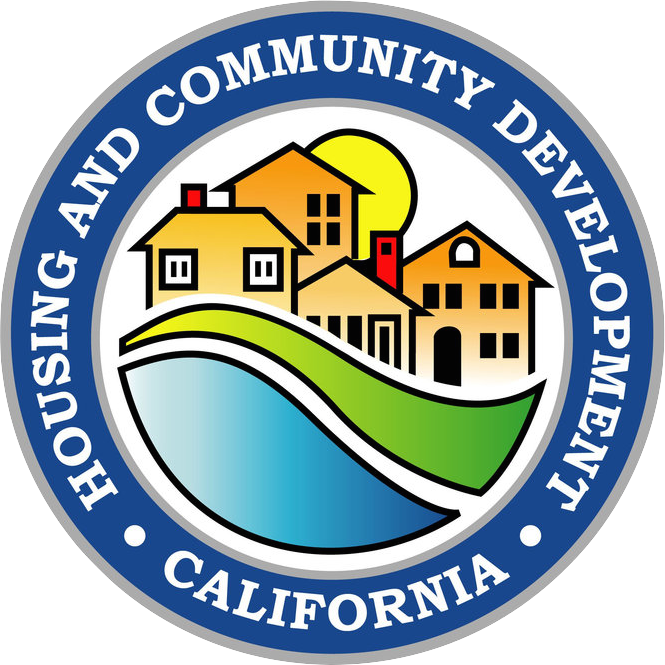Public Participation
Housing issues affect the entire community — residents, employers, and the public and private sectors. The public participation requirement of housing-element law presents an opportunity to engage constituents in a dialogue — defining problems and creating solutions.

The inclusion of community stakeholders (including residents) in the housing-element public participation process helps ensure appropriate housing strategies are more efficiently and effectively evaluated, developed, and implemented. An inadequate public participation process may lead to anti-development initiatives, and strong, vocal community opposition to greatly needed housing development. Successful public participation is important because a diverse cross section of the population can be engaged in defining the housing problem and in crafting solutions that work for everyone in the community. Broad participation and true engagement of the public increases the likelihood that the community members involved in the discussion and planning processes will support new housing strategies and housing developments.
Government Code
Government Code 65583(c)(9) requires that the local government shall make “a diligent effort … to achieve public participation of all economic segments of the community in the development of the housing element, and the program shall describe this effort.”
Government Code 65585(b)(1) requires: “The local government of the planning agency shall make the first draft revision of a housing element available for public comment for at least 30 days and, if any comments are received, the local government shall take at least 10 business days after the 30-day public comment period to consider and incorporate public comments into the draft revision prior to submitting it to the department. For any subsequent draft revision, the local government shall post the draft revision on its internet website and shall email a link to the draft revision to all individuals and organizations that have previously requested notices relating to the local government’s housing element at least seven days before submitting the draft revision to the department.”
- The jurisdiction must make a diligent effort to include all economic segments of the community (including residents and/or their representatives) in the development and update of the housing element.
- The housing element should clearly describe efforts to engage the community throughout the housing element process (e.g., types of outreach, meetings.) and clearly describe the implementation of the housing-element process.
- The housing element should describe who was invited to participate, which groups actually participated, general comments received, and how comments were incorporated into the housing element.
- The housing element should describe any ongoing efforts to engage the public and stakeholders in the implementation of the housing element.
- Describe the dates that the housing element and subsequent revisions were made available for public comment and how those comments were incorporated.
City of Richmond

To announce workshops on the update of its general plan, the City of Richmond mailed more than 32,000 newsletters to households and placed ads and announcements in local newspapers, on the radio, and on its website. In addition, the city created a mobile planning department, known as the “Plan Van.” The Plan Van made stops in the community at neighborhood events and throughout the city to provide residents with information, encouraging them to share their ideas for the city and learn more about the general plan update.
Photo credit: City of Richmond Planning Department
Who Should Participate?
- Involve low- and moderate-income residents to discuss housing problems faced and resources needed.
- Seek housing needs and conditions information from a wide variety of housing consumers and service providers, such as tenants in units at risk of conversion to market-rate, health- and human-service providers, homeless-shelter and mental-health service providers, places of worship, seniors, farmworkers, and non- and for-profit affordable housing developers.
- Engage advocates or groups with housing interests early in the process, so they can share their ideas on how to meet need the housing needs of those they represent. These groups are often ones who provide written comments during the housing-element review process. Including them early in the housing-element development process will help to resolve issues or concerns during the development of the element.
- Invite other stakeholder groups into the housing-element development and implementation processes. These might include local or regional business groups such as the local chamber of commerce, which is concerned about the availability of housing for employees and how housing availability affects regional economic growth. Other stakeholders could include grassroots, community-based organizations, neighborhood associations, homeowner/resident organizations, and civic groups, such as the League of Women Voters, and rotary clubs.
- By including development and finance professionals in the housing-element process, the constraints to housing development (land availability, regulatory environment, and financing concerns, etc.) can be identified based on real-world experience. Appropriate responses and strategies can then be collaboratively developed.
- Local governments should promote involvement of all appropriate local departments to ensure interdepartmental issues are addressed in a comprehensive and efficient manner. For example, the public works department may be able to provide information about infrastructure issues, and the codes department may have information about the condition of the housing stock.
Approaches to Public Participation
- Identify key individuals who can represent their constituent communities during all stages of the housing-element process.
- Be proactive in reaching out to the community. Visit neighborhoods and participate in local events. Establish an ongoing housing-element update and implementation committee using an appointed, ad-hoc, or volunteer citizen-advisory committee to oversee the update and implementation of the housing element.
- Use direct mail, radio ads, and local print or electronic media (such as neighborhood newsletters) to communicate opportunities to engage in the housing-element process.
- Always consider the composition of your target audience and use communication tools that are language-appropriate, culturally sensitive, and grade-level readability.
- Create a website to provide a user-friendly, interactive platform during the housing-element process. Include a link to an online survey that collects responses in a spreadsheet for easy analysis. Include a housing-element public participation blog, which can record more comments than a simple survey and reveal a greater sense of community members’ impressions and concerns about housing needs and plans for development. (The draft element should also be posted on the city’s website.)
- Once initial community input has been received, provide draft copies of the housing elements to all stakeholders.
- Use creative methods to communicate the importance of all stages of the housing-element process.
- Use attractive direct-mail brochures and surveys to capture information.
- Consider mobile resources. See the City of Richmond’s “Plan Van” (in box above) and include interactive presentations.
- Consider having barbeques or set up information displays at community events to enhance interaction with the public. It is important to show up at community functions both to make connections at the neighborhood level, but also to create opportunities to engage people in their own communities.
- Conduct guided tours of both market-rate and affordable developments to show visual comparisons and generate housing ideas. In addition, tours of sites being considered for housing development can give citizens a chance to provide input on site selection.
- Conduct training and education workshops where you can identify individuals who may be interested in taking a community leadership role in the housing-element process.
- Create computer simulations of housing development proposals showing all housing types and locations.
- Encourage ongoing participation by conducting annual public meetings to discuss housing needs and priorities, development successes, and the need for additional resources. Continuing involvement emphasizes the importance of the public’s role in effective implementation.
During Outreach and Implementation
- Anticipate logistical concerns. Public participation can be impeded by language barriers, transportation, meeting times, and child care. Minimize these barriers by anticipating these issues in advance. Plan to address as many concerns as possible. For example:
- Plan some meetings in the evenings and/or on weekends.
- Provide childcare.
- Plan the meetings in locations accessible by public transit or assist in transportation.
- Provide translation/interpreter services.
- Seek input to the housing element early in the development, implementation, and oversight stages.
- Follow up after each event. After holding a public forum or activity, establish a procedure to follow up with concrete action to address the community’s concerns. Be sure that all information relevant to the process is made available, either at regular meetings or by posting to a website. This will help to establish and maintain the jurisdiction’s credibility.
Facilitate Meaningful Participation
- Develop a public participation infrastructure that includes the following resources to promote sustainable community involvement:
- A contact person who is available to the public to answer questions, respond to concerns, and provide information about resources.
- An interactive website where stakeholders can access information and voice ideas and concerns.
- Annual meetings where stakeholders can gather to celebrate successes in housing development, learn about local land-use and development issues, voice concerns, and develop a vision for future housing development.
- Conduct effective meetings and establish rapport early. Build consensus among stakeholders, the public, professionals, and local decision-makers. Help the group move from decision-making based on personal experience alone toward decision-making that is in the interest of the whole community. Effective meetings with the public will:
- Maintain integrity by demonstrating willingness to follow up on concerns and incorporating input.
- Develop rules for engagement. Every participant should agree to the same set of rules and protocols.
- Respect community values and concerns. Acknowledge the sincerity of expressed views.
- Bring directly affected stakeholders into the process as soon as possible. This facilitates the creation of teamwork earlier on and communicates that the process is inclusive.
- Focus on listening. Being patient and listening to all viewpoints, especially when the process breaks down, is valuable to restart the process and gain credibility with the participants.
- Demonstrate willingness to consider and incorporate stakeholder input. The public participation process should not be used to “rubber stamp” a predetermined objective or policy.
- Present all information and data in a format that is easily understood. Take time to ensure the public understands critical information. Encourage questions.
A Note to Those Who Wish to Comment on Jurisdictions’ Housing Elements
As part of its review of the housing element, HCD must consider any written comments received from any public agency, group, or person. If an organization or individual plans to provide comments to HCD on a jurisdiction’s housing element, early contact with the assigned review staff member is encouraged to ensure that HCD is aware of this intent. To ensure that HCD has sufficient time to consider comments in the review of the housing element, written comments should be provided within the first 30 days of the review. Written comments can be provided directly to the assigned HCD Analyst or emailed to HousingElements@hcd.ca.gov.
Sign up to receive a weekly listing of housing elements received by HCD, sign up by clicking this link HCD Email Signup (ca.gov) and selecting the box labeled “Housing Element Review Notification."

